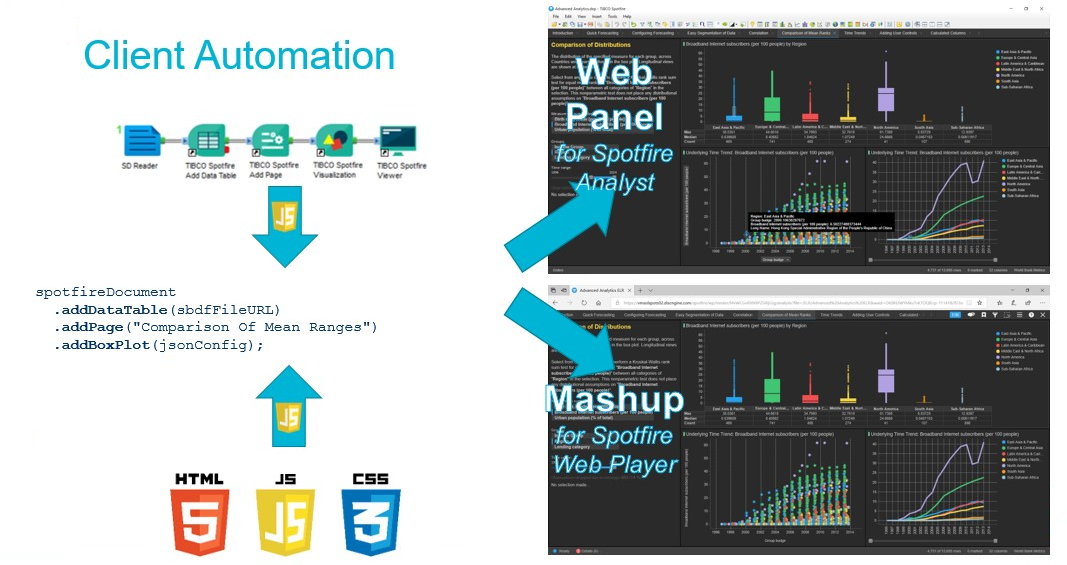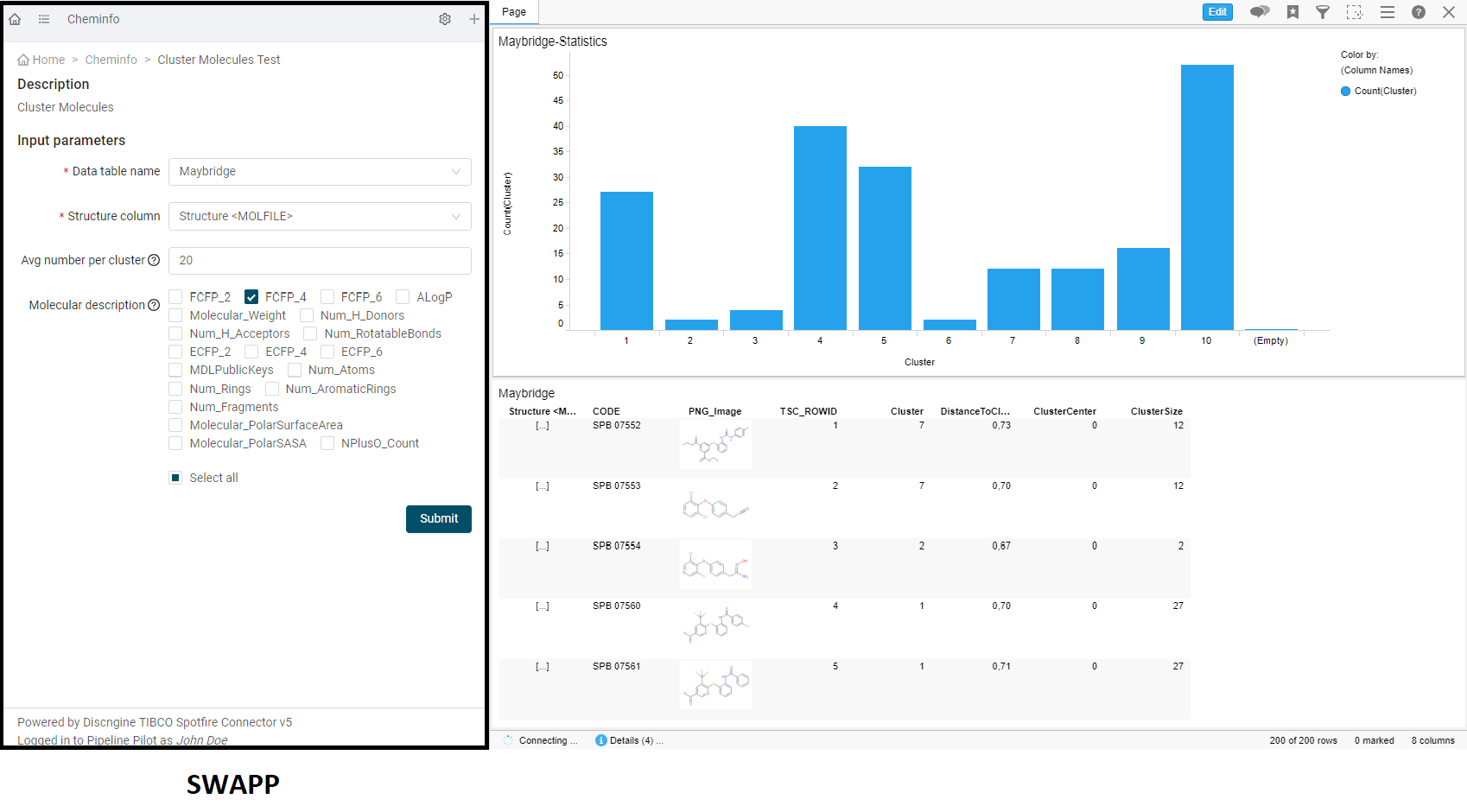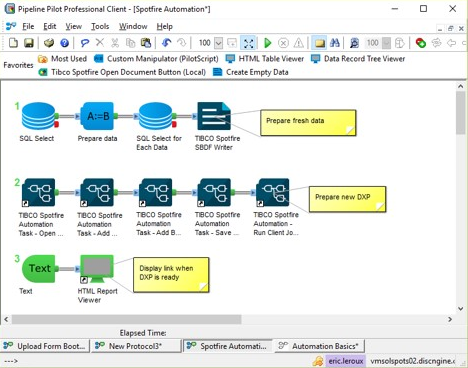Introduction
The Discngine Connector is a set of tools that allows seamless integration between Spotfire and Pipeline Pilot. It contains 3 main modules:
- The Client Automation and SWAPP: interactively build Spotfire documents based on user input
- The Data Functions: bi-directional data exchange between Spotfire and Pipeline Pilot
- The Automation Services: server-side Spotfire document authoring from Pipeline Pilot

Client Automation and SWAPP
The aim of the Client Automation is to allow developers to programmatically interact with Spotfire through a JavaScript API in both Analyst and Web Player clients. Because it is fully written in JavaScript, it can be integrated with all modern JavaScript frameworks like React, Angular or Vue. The Client Automation also contains a Pipeline Pilot collection to easily manipulate Spotfire Data Tables and views. Through the reporting tools of Pipeline Pilot, the Connector components will be translated to the relevant calls to the JavaScript API, without having to write a single line of code.

To integrate the content generated by Pipeline Pilot into Spotfire, the following components are needed:
- The Spotfire Analyst and Web Player extensions: they create the
Discngine Web Panel tool - The JavaScript API: it allows the communication with the Discngine Web Panel tool
- The collection of Pipeline Pilot components: it is based on the Reporting collection which will trigger calls to the JavaScript API. The collection also includes the SBDF Writer component (Java based) to transform Pipeline Pilot data flows into a readable advanced text format for Spotfire. Molecules and images are supported.
SWAPP
To illustrate the potential of the Connector API and provide a readily-available tool to use, the Client Automation embeds the SWAPP (Spotfire Web Application for Pipeline Pilot). It is a standalone web application designed to be used in the Web Panel and developed in collaboration with one of the top Pharmaceutical Companies. This application allows you to register Pipeline Pilot protocols and run them seamlessly as web forms from Spotfire Analyst or Web Player.

This is done in three simple steps.
- First, select which Pipeline Pilot protocol you want to use. When loading the protocol, the SWAPP will suggest the best type of input for each input parameter of the protocol.
- Once registered, you can load the protocol through the menu. The web form will allow you to set the various input parameters based on the registered types.
- After submitting the job, the output HTML will be retrieved and parsed in the page. All javascript instructions generated by the Connector Components will be executed on Spotfire.
Pipeline Pilot Data Functions
Data Functions are a way to integrate external software for data retrieval and processing. They are used in Spotfire to integrate calculations based on python, S-PLUS, open-source R, SAS®, MATLAB® scripts, or R scripts running under TIBCO Enterprise Runtime for R for Spotfire (TERR). The Pipeline Pilot Data Functions have been built using the Spotfire public API and provide a standardized integration with common interfaces of Spotfire to allow you to base the data functions on Pipeline Pilot protocols.
With the Pipeline Pilot Data Functions tool, you can register Spotfire data functions that will execute Pipeline Pilot protocols in all clients (Analyst and Web Player), and without any programming skills. As for native data functions, they can be triggered by events in Spotfire like changes in document's properties or changes in marked records and the data produced by these protocols can be inserted as a new data table, new columns or new rows.

Important changes have been made in TIBCO Spotfire® release 10.3 and later on how authorized users trust data functions. We strongly recommend that you read the official documentation and follow the Spotfire guidelines if you are concerned.
Pipeline Pilot Automation Services
With the Pipeline Pilot Automation Tasks, you can easily generate a Spotfire document server-side from the execution of a Pipeline Pilot protocol. The execution of the protocol can be triggered either by an event or scheduled.
The Automation Tasks module also comes with a collection of Pipeline Pilot components. Those provide the basic bricks to write your protocols: open or save a DXP, add pages, add charts, run script, etc.

